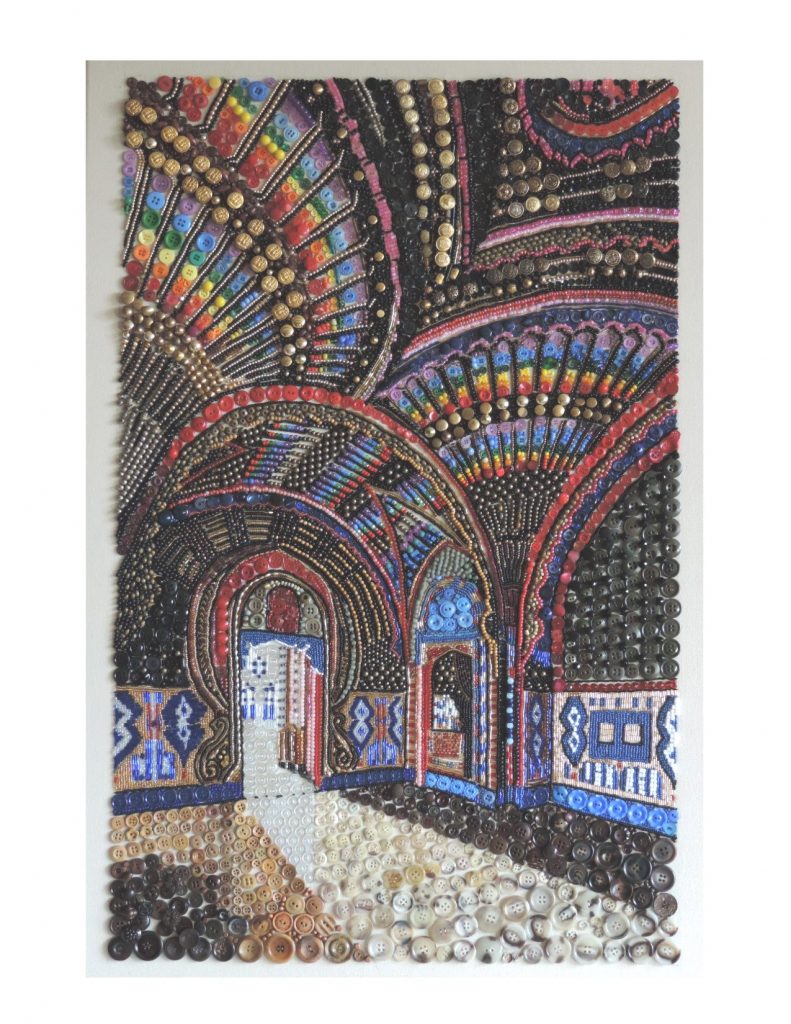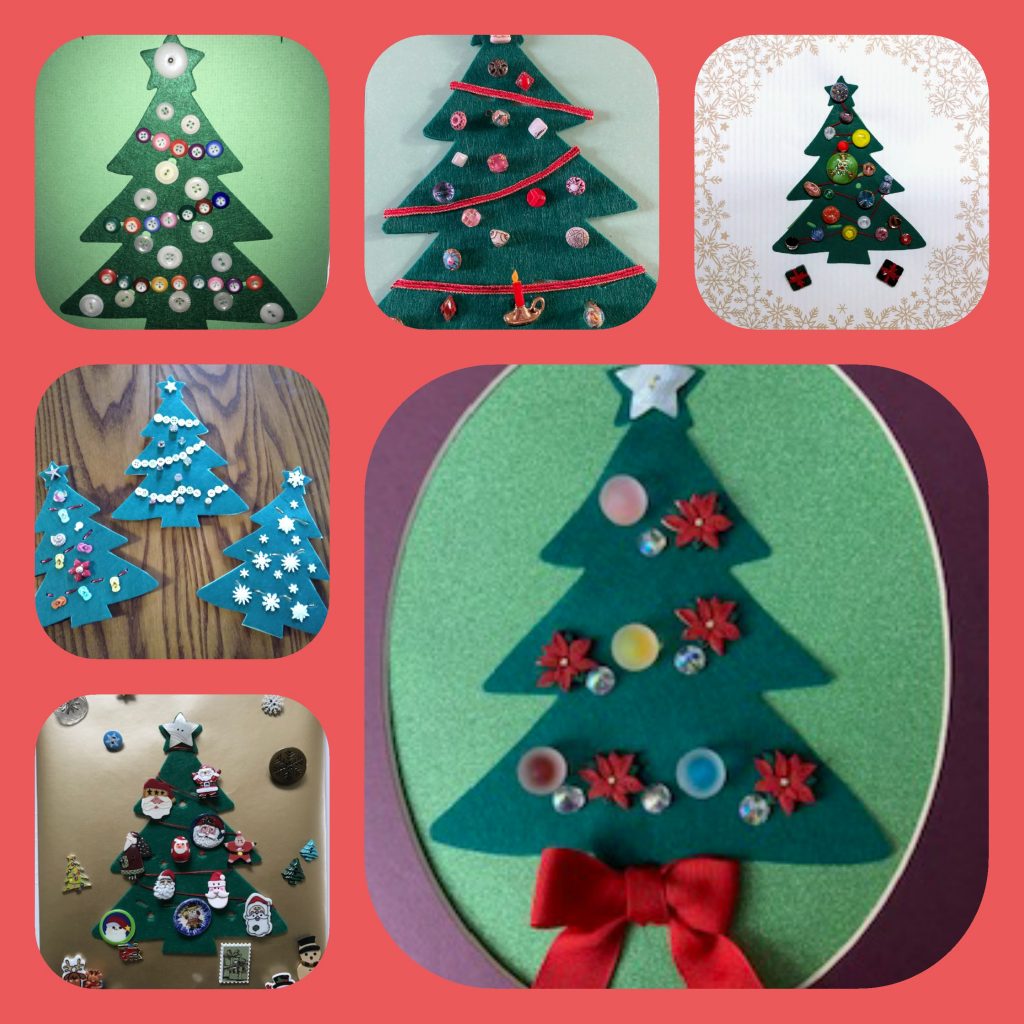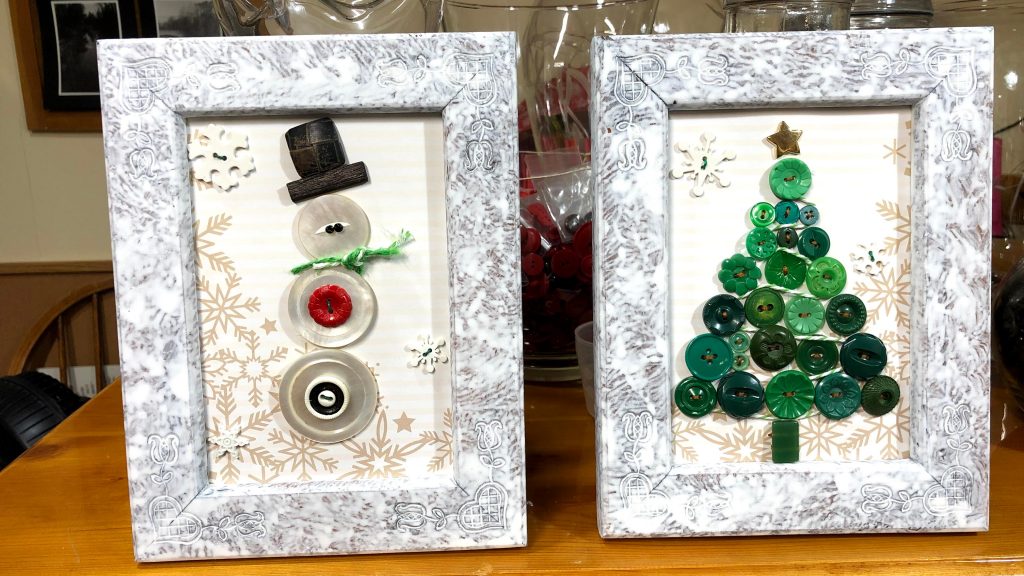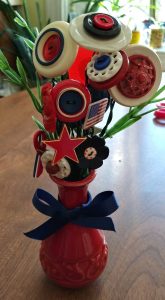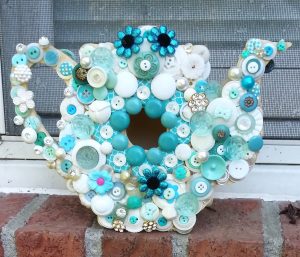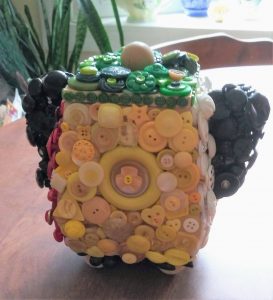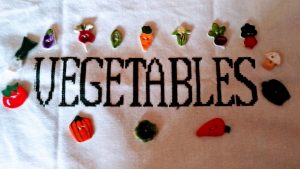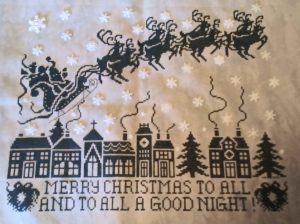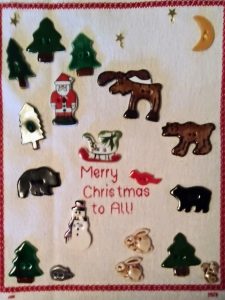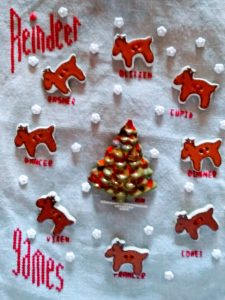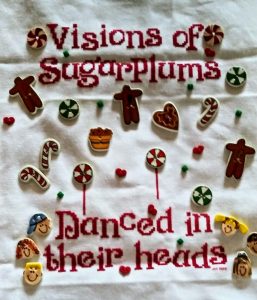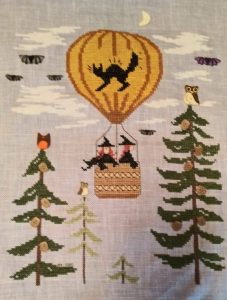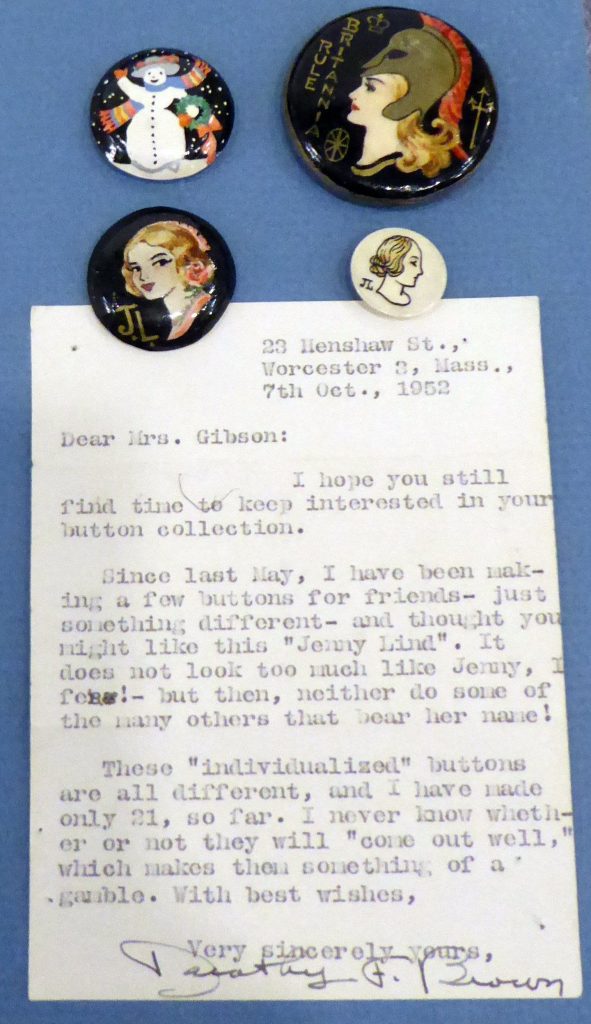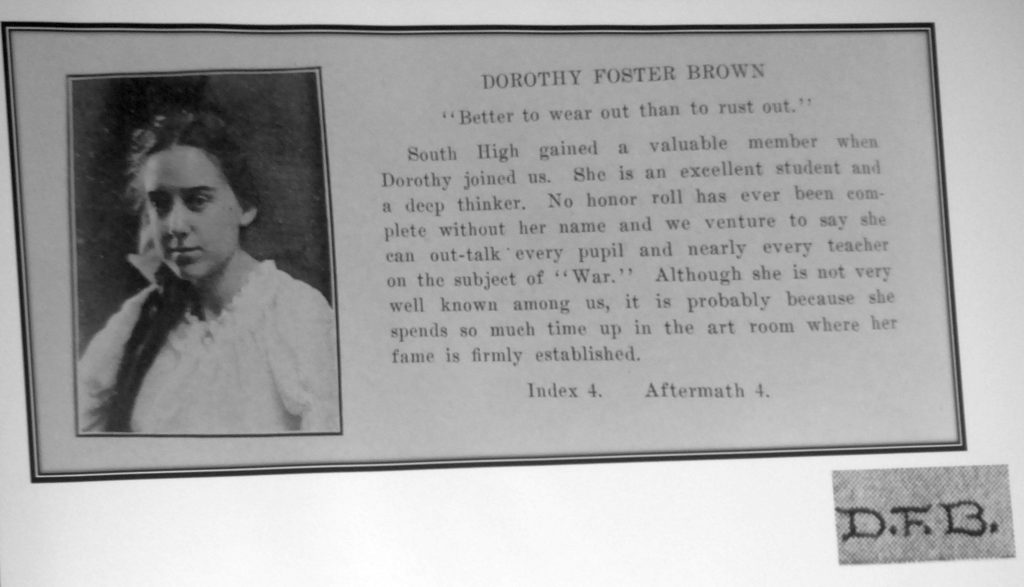A Tale of Two Libraries
“It was the best of times, it was the worst of times, it was…”
Charles Dickens
The Easter season of 2021 and the pandemic were escalating with new strains of the virus being discovered. Here in New York, the restrictions were not as severe as they were a year ago, but safety measures still had to be followed to prevent the spread of COVID-19. Chief among them was the wearing of face masks. Many people had gotten the Covid 19 vaccine, but there were still many who had not. Store owners were fearful of being robbed with everyone wearing masks and carrying canvas bags to put their purchases in. The world was a “different” place.
My name is Anne Coonan and I am the grandmother of twelve-year-old Jaydee Danis. Jaydee is short for Jacqueline Deandra, but Jaydee likes to use just the initials J.D. since she thinks it sounds more like what a private investigator would use. Two years ago, she solved the crime of my stolen kojima art buttons and now she thinks she is Flavia de Luce, the young heroine of the Alan Brady mysteries. Now, let me tell you about another mystery she solved.
It was three days before Easter and Jaydee came to my house to spend the day.
“Jaydee, what do you want to do today?”
“Can we go to the library? There is a book, my teacher told us about, that I would like to read over the spring vacation.”
“Sure, we can go as soon as I air the dogs. “What’s the book?”
“Children of Blood and Bone.”
“Sounds gruesome, but if your teacher recommended it, I guess it’s all right. Jaydee, what’s it about?”
“It is a fantasy set in West Africa. The author is black and was inspired by the Black Lives Matter movement.”
“Who wrote it?”
“The author has a weird name and I can’t remember it.”
“Well, you can look it up by the title.”
We later went to the East Greenbush Community Library. After parking in a handicapped spot, we started to get out of the car.
“Gram, you forgot your mask.”
“So, I did, Jaydee. I am not against wearing it; I just forget to put it on half the time.”
Once inside, Jaydee went to find the book, but I decided to talk to my friend Mary Ann who works at the library and was checking out books. Mary Ann and I went to Russell Sage together. She was an elementary education major and I went into nursing. Our health was the topic of the day.
Jaydee came to the desk. “The book isn’t on the shelf. I’m so disappointed.”
Mary Ann asked what book she was looking for. Jaydee told her “Children of Blood and Bone.”
“Oh, by Tomi Adeyemi. That is a very popular book. We can’t seem to keep it on the shelf. Let me see if it is available somewhere else.”
Mary Ann looked on her computer for interlibrary loan. “There is a copy at the Troy Public Library. I can request it for you, but it will take a couple days to get here, especially with Easter being this Sunday.”
You could see the disappointment on Jaydee’s face.
“Why don’t we just go down to the library now and get it,” I offered. “That used to be my library as a kid and I would love to show it to you.”
“Great! You are the best grandmother. Let’s go.”
Mary Ann informed us that we could not just show up at the Troy Public Library due to the pandemic. “You have to call and make an appointment. Why don’t you call and make one. Do you have a cell phone?” I said I did.
Mary Ann retrieved the phone number off the computer and wrote it on a slip of paper for me. We said our goodbyes and left the library. I called the library when we got outside. The librarian said that Jaydee and I could enter the library in a half-hour, so we hurried off.
I parked the car across the street kitty-corner from the library in a handicapped spot. We got out and this time I didn’t forget my mask. Jaydee failed to cross the street with me and headed for the Russell Sage College Library.
“Jaydee, this way. That is the Sage library. The Troy Library is that white building across the street.”
“Oh sorry, Gram.”
We crossed Second Avenue in front of Ackerman Hall, the nursing building, and took a left. I told Jaydee that the nursing building was built while I was a student.
“Gee, it doesn’t look that old a building,” was her comment.
Before I could reply, I was struck from behind and I fell. My canvas bag was ripped from my arm by a man wearing dark clothes. Jaydee screamed. Another man gave chase but was unable to catch him. He came back to where I was sitting and asked if he could help me up. A third man, a security guard from the college, also came along and called 911 to summon the Troy police. I told them that I was all right, but I wanted to sit a minute. Out of the corner of my eye, I could see Jaydee bend over and pick up something but I wasn’t really interested in what it was.
The two men stayed with Jaydee and me. The man who gave chase helped me onto a bench in the small garden on top of the Ferry Street tunnel. I thanked him for his help and asked him his name and where he lived. He told me his name was Chris, but he was homeless. He said he had worked as a waiter in the restaurant across from Monument Square on the corner of Second Avenue and Broadway before the pandemic, but it went out of business last year after the pandemic started. I asked if he was a veteran and he said he was. At that point, the police came and interviewed us. The policeman told us his name was Officer Dunbar and he asked what was stolen.
I told him my dollar store green bag was snatched.
“What was in it, Ma’am?”
“Nothing important. I had a small notebook, a pen and some Easter cards I was going to mail.”
“That’s all? No wallet?”
“No. I have my wallet in my coat pocket,” I told him.
“Well, that’s good. Canceling credit cards is a pain, let me tell you! What did the man look like?”
“It happened so fast, officer, I did not get a look at the man.”
Chris told the officer, “He had on a mask, a dark coat, and a hoodie under the coat. He ran so fast, I am sure he could not have been very old, probably a teenager.”
The Sage security guard agreed but since he was closer to First Street when the incident happened, he could not supply any more information.
The policemen took all our names and addresses except Chris’s, telling us he would be in touch if he got any new information.
“Gram, do you want to go home?”
“No, Jaydee. I am fine. Let’s go get that book you want. The librarian is expecting us and it is time for our appointment.”
Jaydee got the Children of Blood and Bone and then we headed for home. While we were in the car, she showed me a button she found on the street by the library.
“Gram, is this a button? I found it on the street while we were waiting for the police to come.”
“It’s a toggle button.”
“That’s a weird name.”
“It is a coat button, used on car coats.”
“There are coats for cars? I have never seen one,” she grinned.
“It is an everyday coat and was made to wear in a car, silly.”
The button was shaped like a horn with two holes and looked like wood. It had some blue thread attached to it.
“Toggle buttons were first made in the 1850s. The British navy used them on their gloves during WW1 because they made it easier to fasten and unfasten their gloves in the cold weather.”
“There you go with the history lesson again. Do you think that veteran that helped you lost it?”
“Well, he may have, but he is much too young to have fought in WW1 and he is an American, not British.” I am not sure what Jaydee was thinking.
“Oh, yeah,” was her reply.
After we got home, Jaydee went upstairs to her bedroom to read the book she got and I stayed downstairs and turned on “The Talk” until it was time to fix dinner. Jaydee asked if she could stay for a few days and since her mother agreed, she was with me when the Troy police called the next day.
“Mrs. Coonan, this is officer Dunbar. We think we caught the man who assaulted you. Would it be possible for you to come to the police station tomorrow to identify him in a lineup?”
“I can come anytime as long as I can bring my granddaughter who is currently staying with me.”
“That would be fine.”
“What time do you want me there?’
“Would 10 AM be okay? Report to the desk Sargent and tell him you are there to see me.”
“We will be there.”
“Great!”
At the police station, we were ushered into a room with a big glass window. On the other side were six men. Each was asked to step forward for me to look at. After seeing all six, I could not identify who had knocked me down.
“I am sorry, officer Dunbar. I did not get a good look at the man in question. He hit me from behind. As far as I am concerned, it could have been any one of them.”
“Okay, Mrs. Coonan, I knew it would be difficult, but I had hopes. We need to get this guy off the streets.”
It was then that Jaydee piped up.
“I know who did it.”
“How do you know, Jaydee?” I asked.
“Look at number 3. His coat is missing a button.”
“So?”
“The buttons on his coat are just like the one I found. Just like this one.” And she pulled the button out of her coat pocket. “It’s a match.”
Officer Dunbar said, “Let me see that.” He took the button from Jaydee. “Sure enough, it looks like a match. Even the thread matches. It looks like we got our man. Thanks, young lady. I need to take that button and confront him with it. Maybe I can get him to confess.”
“You are welcome, Officer Dunbar. Glad to help.” Jaydee was all smiles. She seemed to be proud of herself.
Suspect number 3 was held in custody for arraignment.
Jaydee had an idea the next day.
“Let’s take up a collection for Chris so he can find a small apartment. I will donate any money I get for my birthday to the fund. Maybe the East Greenbush Community Library and the Troy Public Library will help.”
The Troy Public Library contacted the Troy Record and they ran a story of how a homeless veteran tried to help an elderly lady who had been robbed and the culprit was identified with the use of a button. The East Greenbush Community Library helped Jaydee set up a Go Fund Me page. A total of $899.93 was raised before CBS This Morning found out about the effort and asked Jaydee, me, and Chris to appear on their show and paid for our trip to New York City.
More donations poured in and Chris had enough money to rent a small apartment for a year and he was offered a job with a home heating company since he had experience in the military which qualified him to do the job.
All because of a lost button.
June Kosier

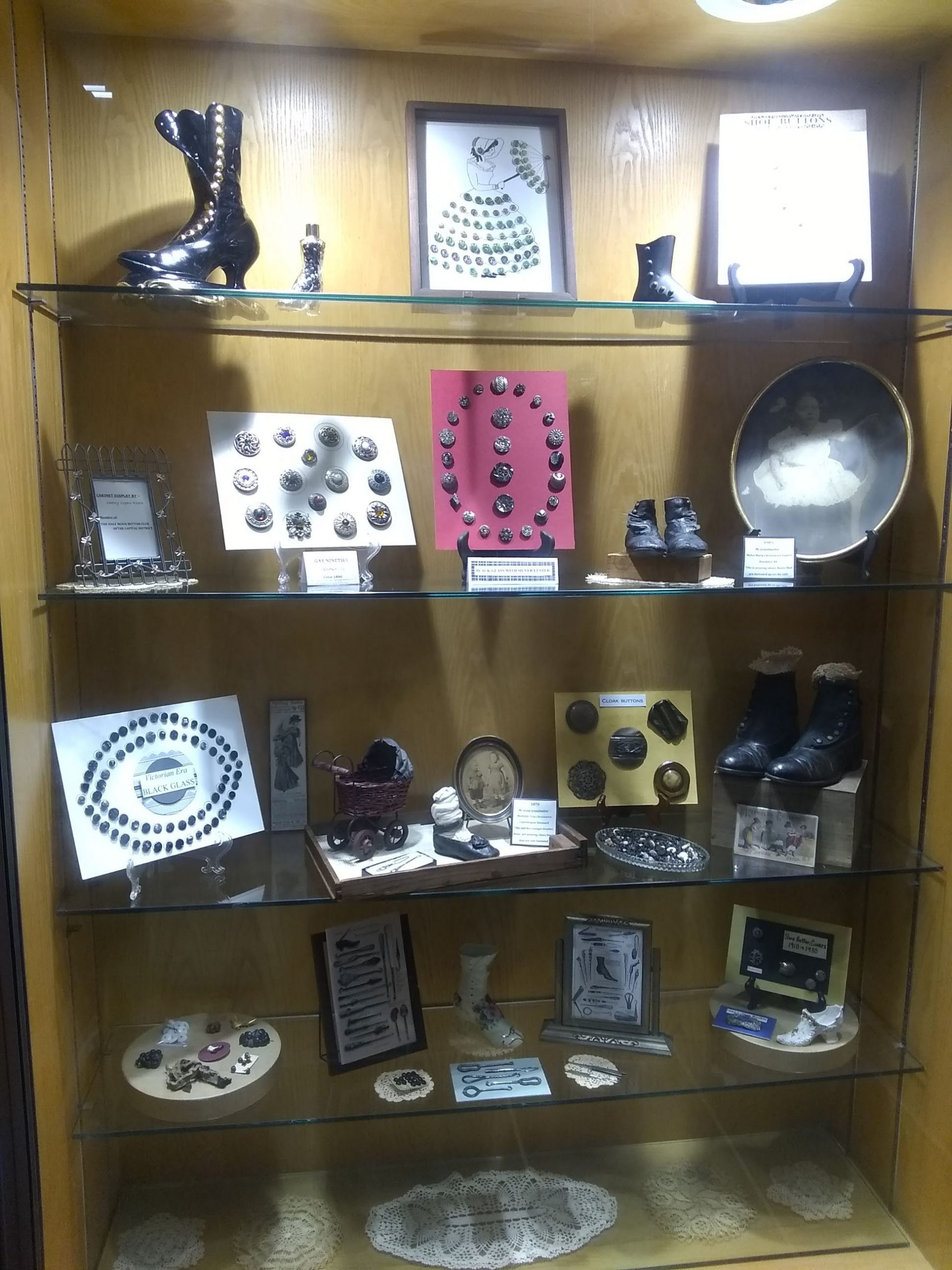
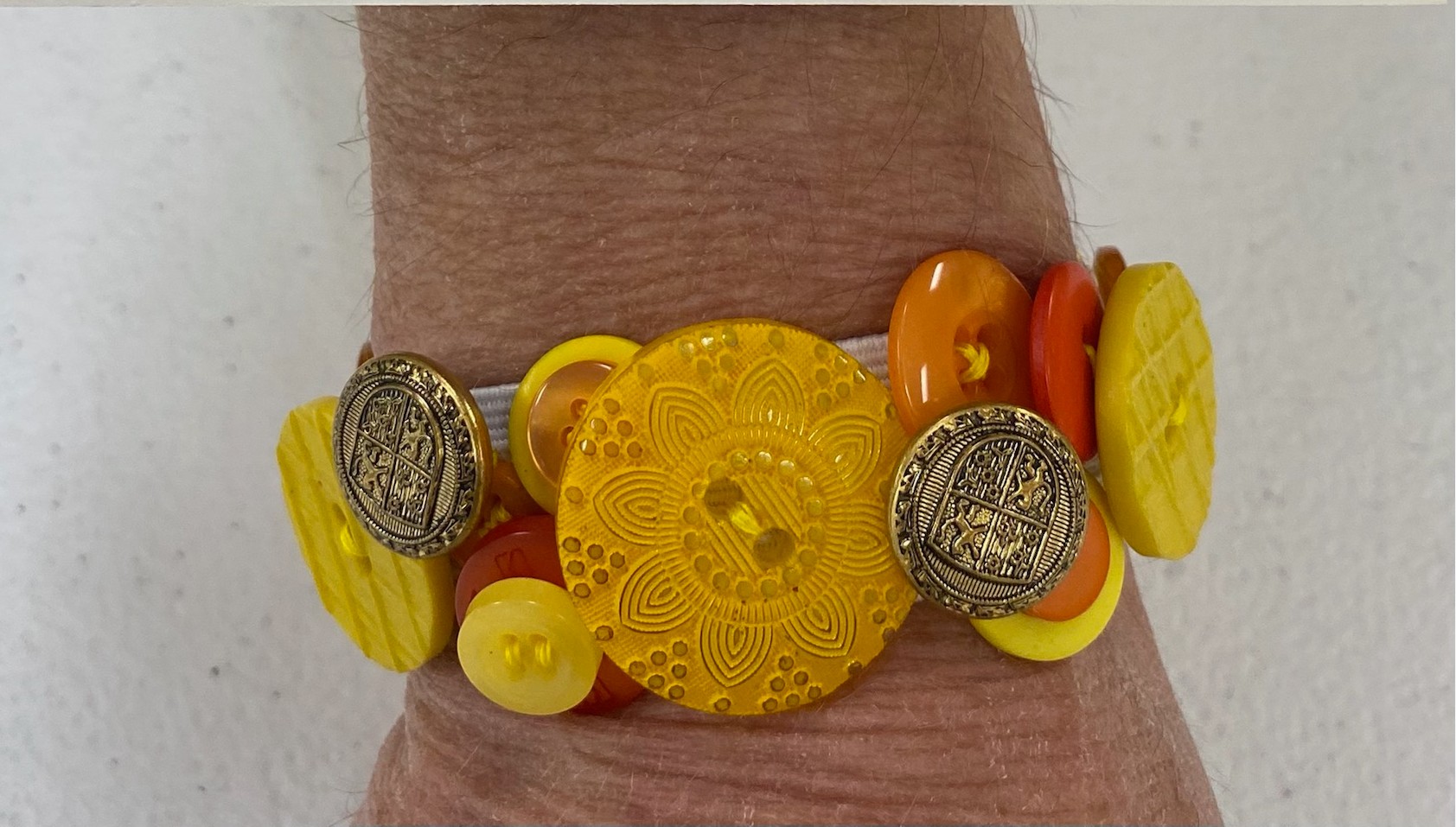
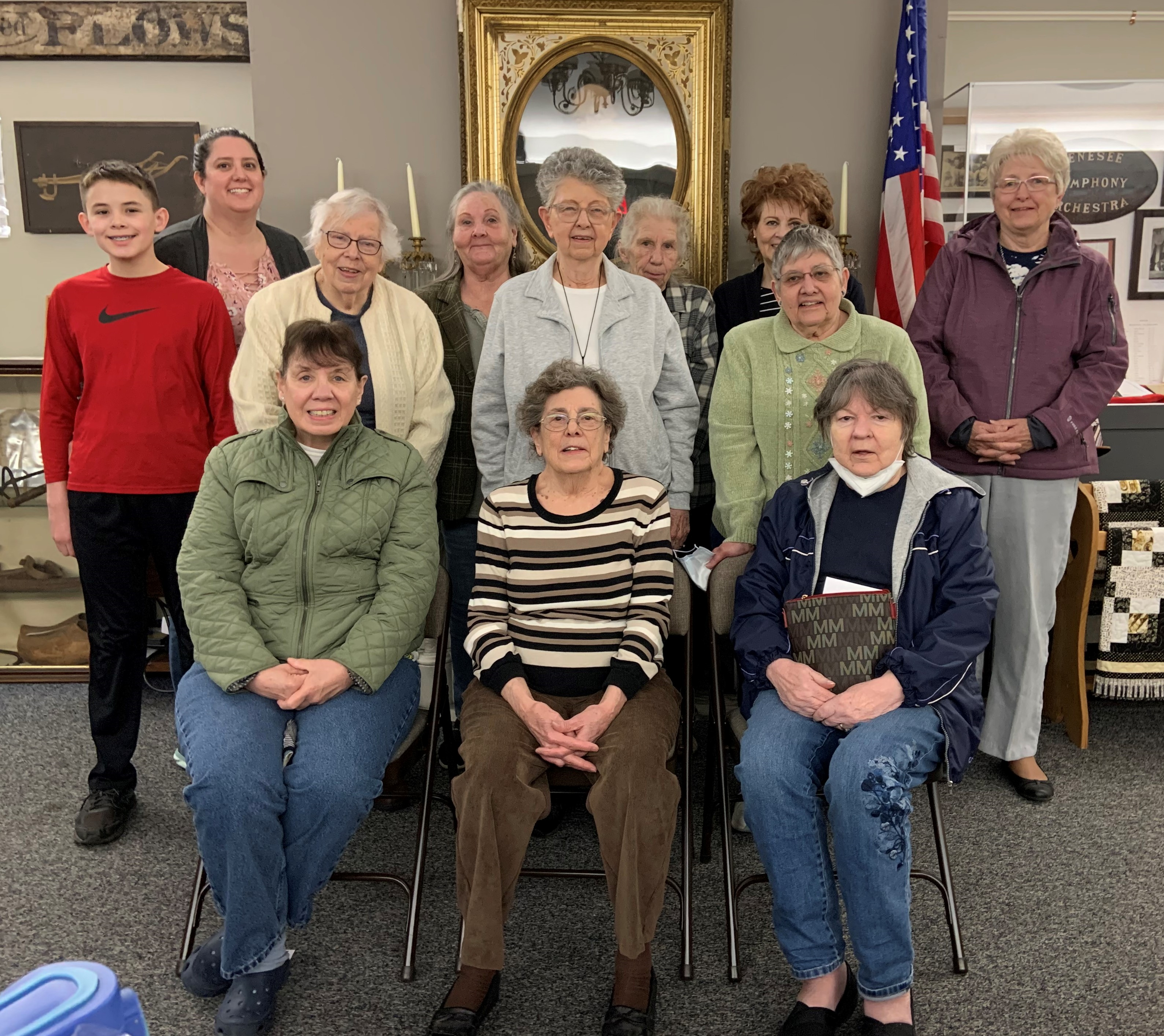 In-person button club meetings are finally starting up again! Norma Brown shared that the NYS Genesee Club met on March 31 at the Holland Land Company (museum) in Batavia NY. President Amy Burgess presided over the meeting. This was our first meeting for the new year. Our hostess and helper, Jennifer Covert, and her son Matthew (on the left in the photo) gave a program on “Venery.” We were surprised and learned so much along with great button examples.
In-person button club meetings are finally starting up again! Norma Brown shared that the NYS Genesee Club met on March 31 at the Holland Land Company (museum) in Batavia NY. President Amy Burgess presided over the meeting. This was our first meeting for the new year. Our hostess and helper, Jennifer Covert, and her son Matthew (on the left in the photo) gave a program on “Venery.” We were surprised and learned so much along with great button examples.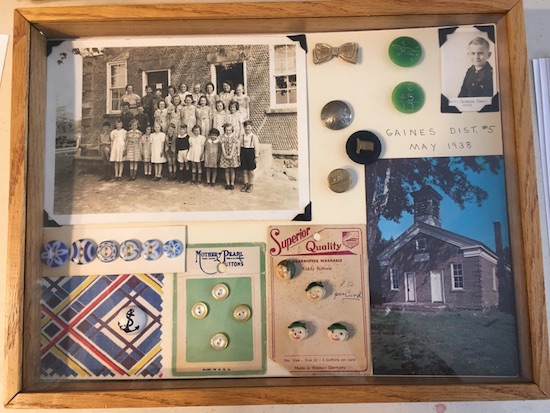 Doug Farley, Director of the Cobblestone Museum in Childs, NY recently interviewed NYSBS and Rochester Button Club member Mary Ann Spyshalski about her recollections of growing up in Childs. It’s a fun read and with some great photos. The interview is published in the
Doug Farley, Director of the Cobblestone Museum in Childs, NY recently interviewed NYSBS and Rochester Button Club member Mary Ann Spyshalski about her recollections of growing up in Childs. It’s a fun read and with some great photos. The interview is published in the 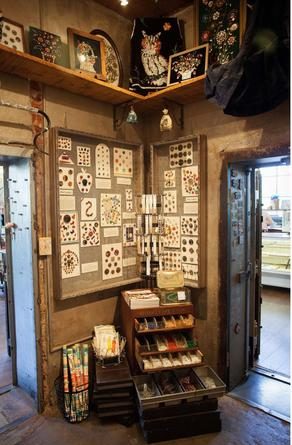 See Susan Davis of Grandmother’s Buttons gives a tour of her Button Museum located in an old bank vault in St. Francisville, Louisiana. The buttons are displayed on cards and in unique art forms. The museum boasts hundreds of antique buttons from the 1760s to the 1940s. Check out the
See Susan Davis of Grandmother’s Buttons gives a tour of her Button Museum located in an old bank vault in St. Francisville, Louisiana. The buttons are displayed on cards and in unique art forms. The museum boasts hundreds of antique buttons from the 1760s to the 1940s. Check out the 